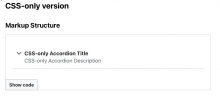Summary
Remove IE11 from basic support.
Affected components: MediaWiki core, skins and extensions. Wikimedia Foundation libraries like Codex and OOUI.
Motivation
Improve the user experience by making pages load slightly faster and use less bandwidth, because we'd send less CSS code down the wire.
Take away maintenance-burden of writing fallback CSS for newer CSS features not supported in IE11. The effort spent in writing workarounds and addressing specific browser code is a waste of our limited resources.
Unlock use of newer CSS features that do not have a fallback and thus cannot be safely used today.
Statistics
Superset (Wikimedia Foundation login only)
2022: “~0.1%, down from ~0.5% at the start of 2022, and ~1.0% at the start of 2021.” –T288287#8617086
2023: T331463: IE11 User and Traffic Analysis update 2023
analytics.wikimedia.org
https://analytics.wikimedia.org/dashboards/browsers/#all-sites-by-browser/browser-family-and-major-hierarchical-view
Development abilities to gain without IE11
Full list at caniuse. Excerpt:
- display: flex, Full Flexbox API; removal of pre-standard Flexbox implementation (bytes and pain saved) and only standard syntax support
- calc() as CSS unit value allowed
- @supports feature queries able to be used unrestrictedly
- CSS custom properties (aka CSS Variables)
- <details> element
- TTF/OTF web font support
Note that custom properties aka CSS vars are not only blocked by IE11, but it's with 0.51% globally according to caniuse, the biggest of the remainders (Edge 12-15)





